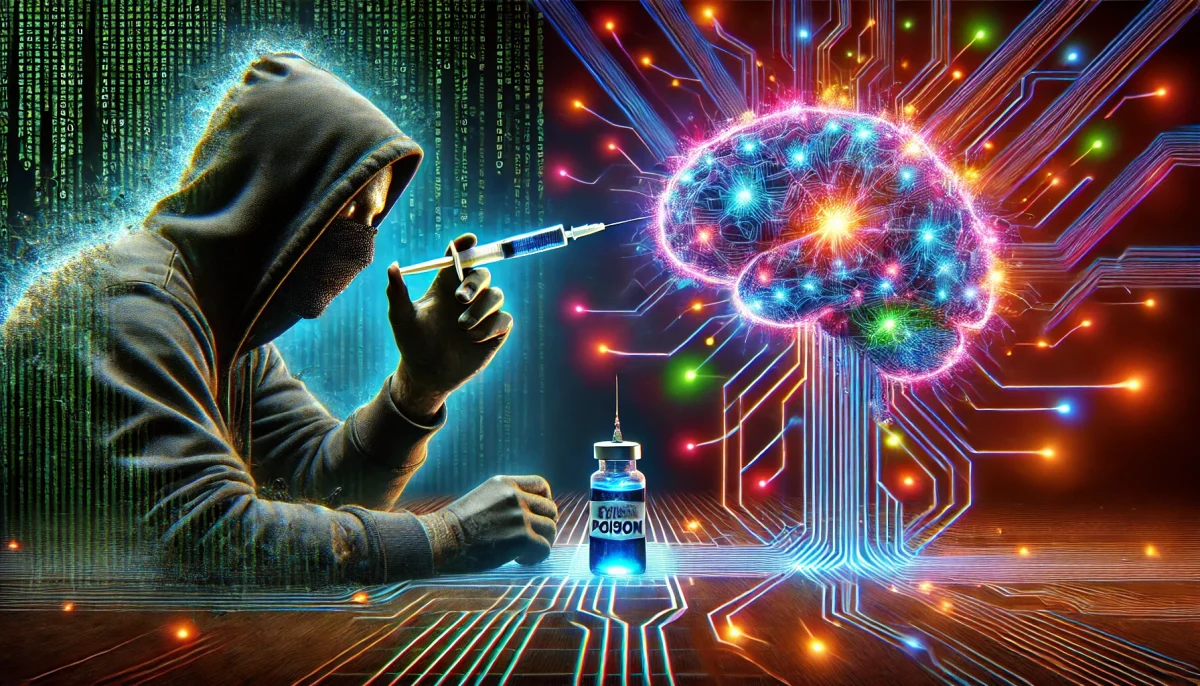In the rapidly evolving world of artificial intelligence (AI), not all advancements are aimed at making systems smarter. Some are designed to make them fail. Enter poisoning attacks, a new form of sabotage that can turn intelligent systems against themselves. But the question is, how does it work and should we really care about it?
What Are Poisoning Attacks?
Imagine teaching a student a mix of good and false information. If you sprinkle enough false information in the lessons, even the brightest student will come to some incorrect conclusions. In AI, poisoning attacks work similarly: the data used to train the AI model is corrupted by an attacker with the intent to make errors once the AI is functioning (Shafahi et al., 2018). For example, consider a self-driving car that is trained on images of road signs. If an attacker can poison the system with even a small number of false images that label a “stop sign” as unreadable, the car could misunderstand traffic rules and be dangerous not only to the people in the car, but to everyone on the street (Wang et al., 2023).
(Dash & Bosch AIShield, 2023)
Real-World Impact: Why Should You Care?
Poisoning attacks aren’t just a theoretical risk, they are a real threat in AI systems today. Take for example GitHub’s CoPilot, an AI run code completion system that helps developers autocomplete their code in real time (GitHub, 2023). In this case, an attacker would poison the CoPilot and steer it towards generating vulnerable code that has a number of security defects (Improta, 2024). While this seems like a problem that only impacts coders, this can result in problems for other people as well. Vulnerable code can result in everyday people losing their private data, such as the recent Social Security Number breach in the USA (Chin, 2024). A relevant example on how poisoning attacks can affect your everyday life is through social media. Algorithms could be altered in order to determine what goes viral or to spread misinformation by pushing fake news to a large number of users. This is a scary thought as news is being filtered more often by AI.
Defending Against Poisoning: A Losing Battle?
Defenses against poisoning attacks are evolving everyday, although attackers often seem to be one step ahead. Additionally, anomaly detection systems are being integrated into AI systems, but the question is, how much of the data needs to be infected in order to not be considered an anomaly anymore (Huang et al., 2022)? As Alexey Kurakin et al. (2016) highlight in “Adversarial Machine Learning at Scale”, vulnerabilities are being exploited by attackers in real time, creating a race between “poison” and “antidote”. However, the poison is being treated with continuous advancements in AI security and collaboration among researchers. Defenses are growing smarter, aiming to outpace attackers, making the future look promising for AI based systems.
Conclusion: Can We Trust AI?
AI holds a great deal of potential but is just as good as the data we feed it. The reality is that this is just the beginning of a fight to secure data and by extension, AI itself. The future of technology is being shaped by these poisoning attacks so stay tuned and keep your eyes out for misinformation. And don’t forget, data is the driving force behind everything!
References
Alexey Kurakin, Goodfellow, I. J., & Samy Bengio. (2016, November 4). Adversarial Machine Learning at Scale. ArXiv (Cornell University). https://doi.org/10.48550/arxiv.1611.01236
ChatGPT. (2024, September 16). A Hacker Injecting Poison into an AI Brain Using a Syringe, in a Panoramic Style.
Chin, K. (2024, February 20). Biggest Data Breaches in US History. UpGuard. https://www.upguard.com/blog/biggest-data-breaches-us
Dash, M., & Bosch AIShield. (2023, May 9). Understanding Types of AI Attacks. AI Infrastructure Alliance. https://ai-infrastructure.org/understanding-types-of-ai-attacks/
GitHub. (2023). GitHub Copilot · Your AI pair programmer. GitHub. https://github.com/features/copilot
Huang, S., Bai, Y., Wang, Z., & Liu, P. (2022, March 1). Defending against Poisoning Attack in Federated Learning Using Isolated Forest. IEEE Xplore. https://doi.org/10.1109/ICCCR54399.2022.9790094
Improta, C. (2024). Poisoning Programs by Un-Repairing Code: Security Concerns of AI-generated Code. https://arxiv.org/pdf/2403.06675
Shafahi, A., Huang, W., Najibi, M., Suciu, O., Studer, C., Dumitras, T., & Goldstein, T. (2018). Poison Frogs! Targeted Clean-Label Poisoning Attacks on Neural Networks. https://arxiv.org/pdf/1804.00792
Wang, S., Li, Q., Cui, Z., Hou, J., & Huang, C. (2023). Bandit-based data poisoning attack against federated learning for autonomous driving models. Expert Systems with Applications, 227, 120295–120295. https://doi.org/10.1016/j.eswa.2023.120295


Hi, Ioana! I really love your article! It was very interesting to read more about poisoning attacks as I had never heard of them before. It’s amazing that you could spread awareness of them through your blog because they are a real part of our world, and this should encourage us to be more careful with the information that we find online. Great work!